Snorkeling is not something that we do daily all year round. However, keeping our snorkeling mask clean will allow us to always have this equipment for underwater swimming ready for being used. Like this, packing our suitcases for summer vacation next time will take us less time and it will definitely be less nervous!
So today we decided to tell you a few easy tips on how you can keep your snorkeling mask clean using only the simplest methods and tools. With that in mind, you will learn how to keep it (and how to maintain it) clean longer with minimal effort.
How to Clean Your Snorkel Mask. Basic Rules
To begin with, we must admit that cleaning methods and tools will vary depending on the material your mask is made of. For instance, a glass mask and a silicone mask will have to be cleansed differently. Also, it does matter whether the mask is new or old.
So, for example, if you want to know how to clean an old snorkel mask at home yourself easily, you can opt for a very simple and effortless method.
- shake your mask to remove all the remaining sand and debris left after the diving session
- rinse it with fresh water
- take any non-gel toothpaste and apply it to the mask lens
- using either a soft-bristled toothbrush or a soft and clean cloth, delicately clean the lens of the mask from both inside and outside
- repeat the rinsing once again with clear water
- dry your mask with a clean dry cloth
- and store it according to the instruction
However, as we have already mentioned above, this scheme can be used only if your mask is already old and only if it is made of glass! If you need to learn how to maintain your silicone snorkel mask and how to keep it clean if the lens is made of plastic, keep on reading since we will provide more detailed instructions below.
And remember that the snorkel mask that is being properly cared for and maintained is able to serve you for as long as five to ten years! This is indeed a good investment, so we advise you to adhere to the life hacks you will find in this article.
How to Clean a New Snorkel Mask?
So how to clean a snorkel mask if it is brand new, you may wonder? Well, this is a reasonable question since a new mask has not been used yet so why would it need any cleaning at all?
However, if you take a closer look at a brand new mask for snorkeling that has just arrived from a store, you will notice that its lens has a thin coating of either plastic or silicone. This layer is needed and it is sprayed across the mask for protecting the lens, as well as for better shelf appeal.
However, if you let this protective layer stay where it is now, it will lead to blurriness and decreased visibility when the mask will be used underwater! Of course, when using such gear, you will not be able to fully enjoy the beauty of the underwater world. This is why this protective coating must always be removed prior to using the brand new mask for the very first time.
Basically, you can safely make use of the very same method as we have just described above for cleaning the old mask. However, please take into consideration that, if your new mask has a plastic lens, never apply a toothbrush on it! Even if its bristles are super soft. Otherwise, you will scratch the lens all up and this flaw will not be possible to fix.
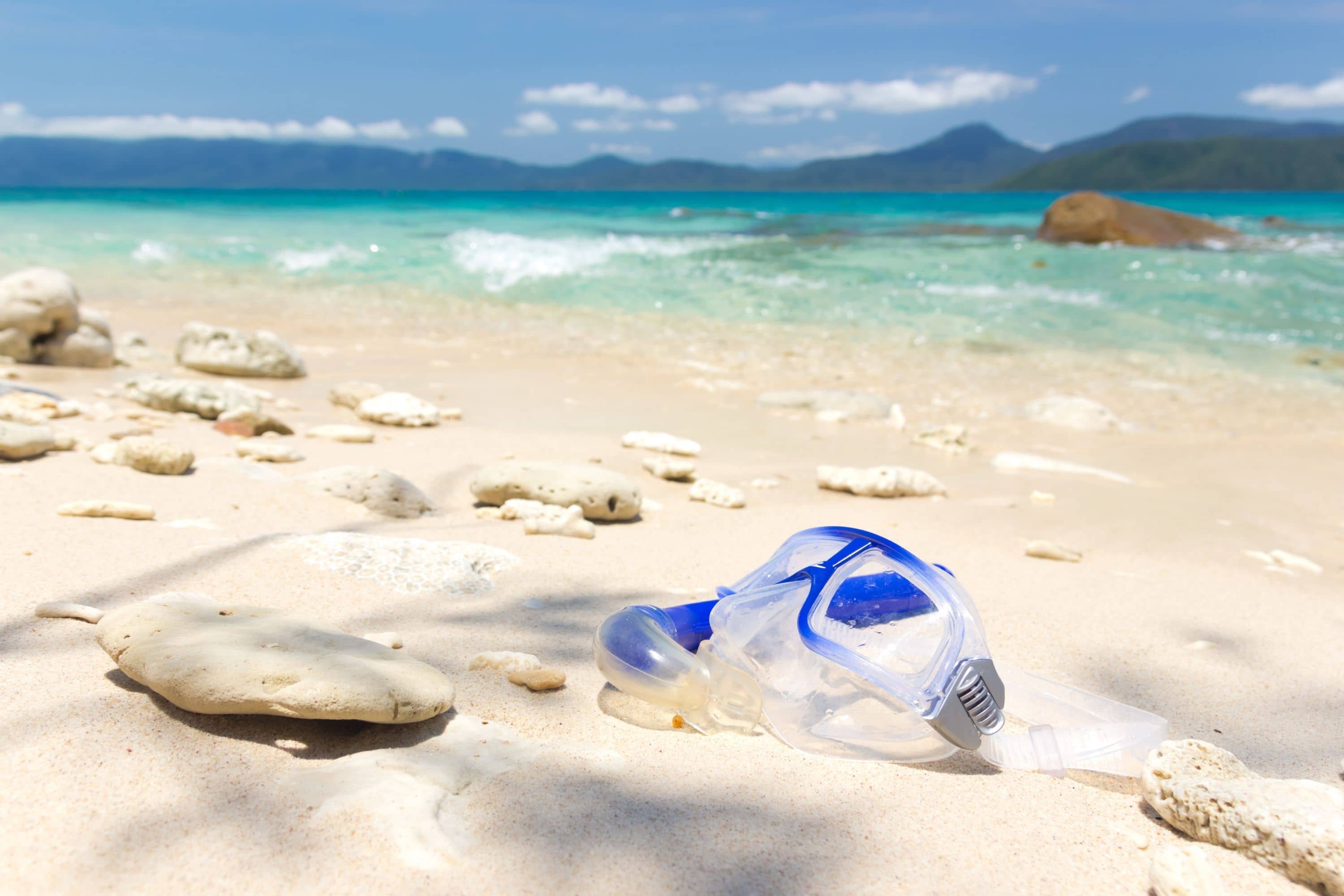
Instead, for removing the protective layer from the new plastic lens, make use of a clean and soft cloth (ideally microfiber) to gently massage the toothpaste in. Once again, we remind you that the toothpaste must not be gel! Also, it must not contain any abrasive or scrubbing particles in it.
If you have any doubts of whether your toothpaste can be used safely on your brand new snorkel gear, better stick to dishwashing soap dissolved in water. as an alternative method, you can safely use some baby shampoo (also after dissolving it in water, of course).
As for the optimal ratio, we recommend you make use of fifteen drops of baby shampoo or dishwashing liquid per 2.5-ounce spray bottle filled with water. After the product is dissolved, simply pulverize it on the mask face and rub the mixture around with a soft cloth both inside and outside of the mask. And don’t forget to wash its corners and edges, too!
After the lens is cleansed, rinse the mask thoroughly under the running tap water and delete any bubbles if they remain on it with dry parts of the cloth. By the way, this cleaning method will not only allow you to clean your new mask! It also helps to defog a snorkel mask effectively.
How to Clean Snorkel Mask After Salt Water When Season Ends?
If you think that you have to clean a snorkel mask only once before you use it for the first time, you are wrong. This underwater gear needs proper care and cleaning after each use ideally, and of course, it must be thoroughly cleansed when the snorkeling season ends. Like this, you can store it safely until the next time it will be used.
So first of all, start with cleaning the mask. It includes shaking off all the sand, rocks and debris you can find on it. Also, remember to look for any salt build-up and cleanse the mask skirt and strap.
As for the cleaning methods, feel free to make use of the scheme described above and do keep in mind that a glass and a plastic mask must be cleaned in different ways!
After the gear is clean, dry it thoroughly with a clean and soft cloth, and store in a safe place. As for the storage spot, we would recommend you find a place that is out of direct sunlight first of all. Also, it will be great if you manage to find a storage location where nothing will be rubbing against your mask or scrubbing it. Any scratches will damage the lens and make the mask useless for diving.
In addition, pay attention to the temperature and humidity in a room where the mask is kept. The ideal conditions include room temperature surrounding and moderate humidity level. Otherwise, there will be a risk of mold and fogging development! Besides, the silicone parts of the mask can be damaged if exposed to direct sunlight long enough or if the humidity is wrong.
How to Clean a Snorkel Mask After Each Use?
If you dive often enough, you surely know that you have to clean your snorkel mask after each use to keep it clean. If you don’t do this, the mask will most likely get foggy and covered with salt residue that will be pretty hard to remove later.
Of course, how thoroughly the mask must be cleaned hangs upon how active you are using it. Most people prefer to simply shake the sand out and give it a good rinse under the tap water before the next use.
However, we would recommend you clean your mask thoroughly if you want to enjoy your snorkeling adventures to the fullest. To do this, feel free to make use of a cleaning scheme we have provided above. And again, remember that a glass mask and a plastic mask must be cleaned differently!
Also, always remember to examine its skirt and straps. The skirt is the rubber, soft plastic, or (in most cases) silicone part of the mask that goes around the face of the diver. It helps to hold the mask where it belongs while you are underwater, also, the skirt is what provides your mask with the proper seal and thus keeps the salty water away from your eyes.
So naturally, the skirt area must be carefully examined after each dive and cleaned. Remove the sand, rocks, and other debris that you find there, and don’t forget about the salty build-up!
Like this, you will not only keep your mask clean longer, but you will also make sure it will be properly protecting you during the diving session.
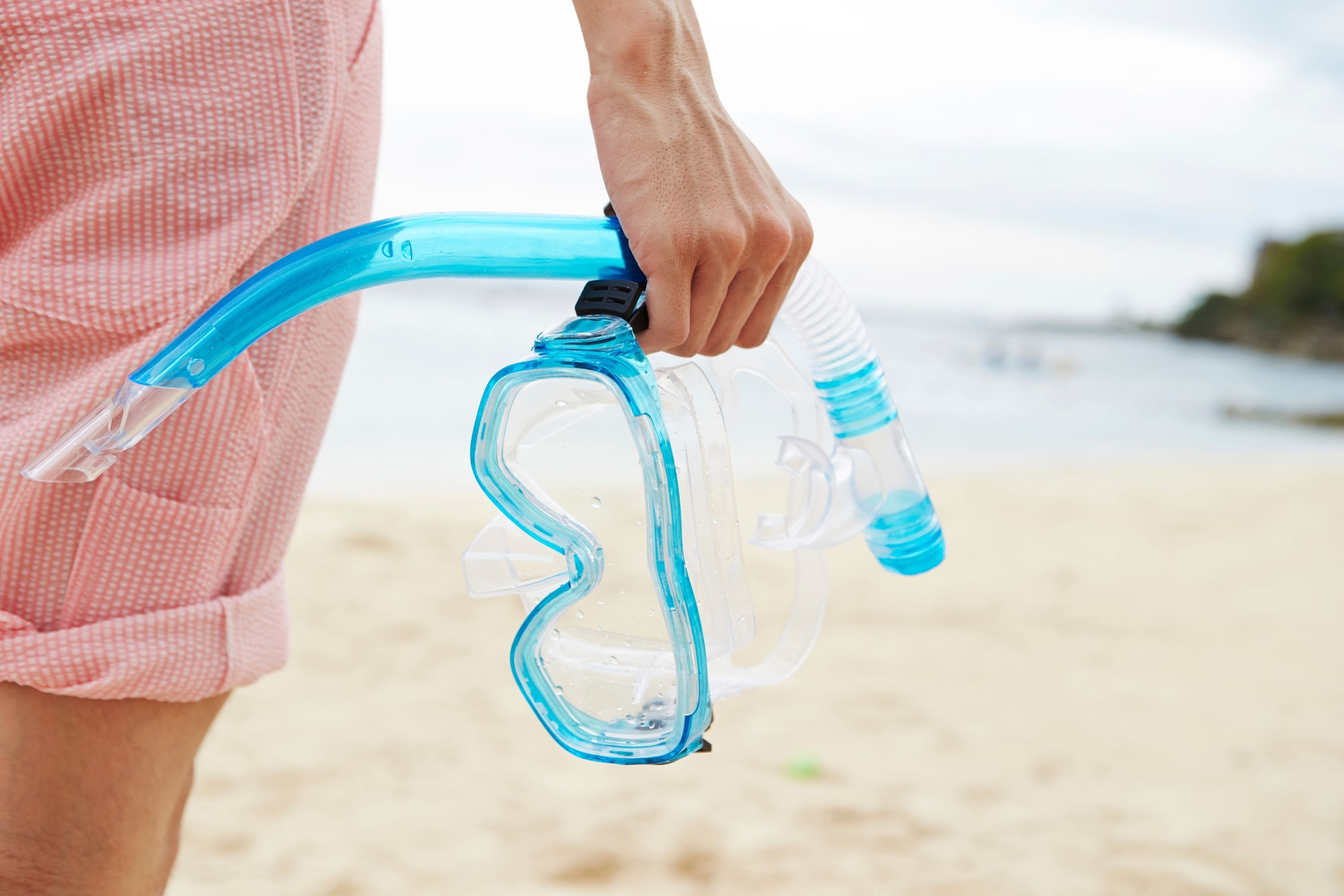
How to Clean Your Snorkel Mask From Sand?
Sand is known for being able to end up in the most unexpected and hidden places. And of course, it can get into your snorkel mask easily. However, if we don’t get it out of there, these tiny yet hard particles will not only create a hazard for the mask lens or skirt. A mask full of sand can be potentially hazardous for you as well!
This is why, after you are done with diving, take the mask off and examine it attentively. Give it a good shake to see if any sand is there. Like this, you will also be able to get rid of most of it. Then, you can brush the mask and its strap carefully using a very soft bristle brush (this step is better to be skipped if your mask has a plastic lens though).
Finally, to finish the cleaning procedure, prepare a soapy solution by dissolving some baby shampoo or dishwashing liquid in warm water, and rinse the mask with it. Give it a final rinse with clear water and dry using a soft dry cloth.
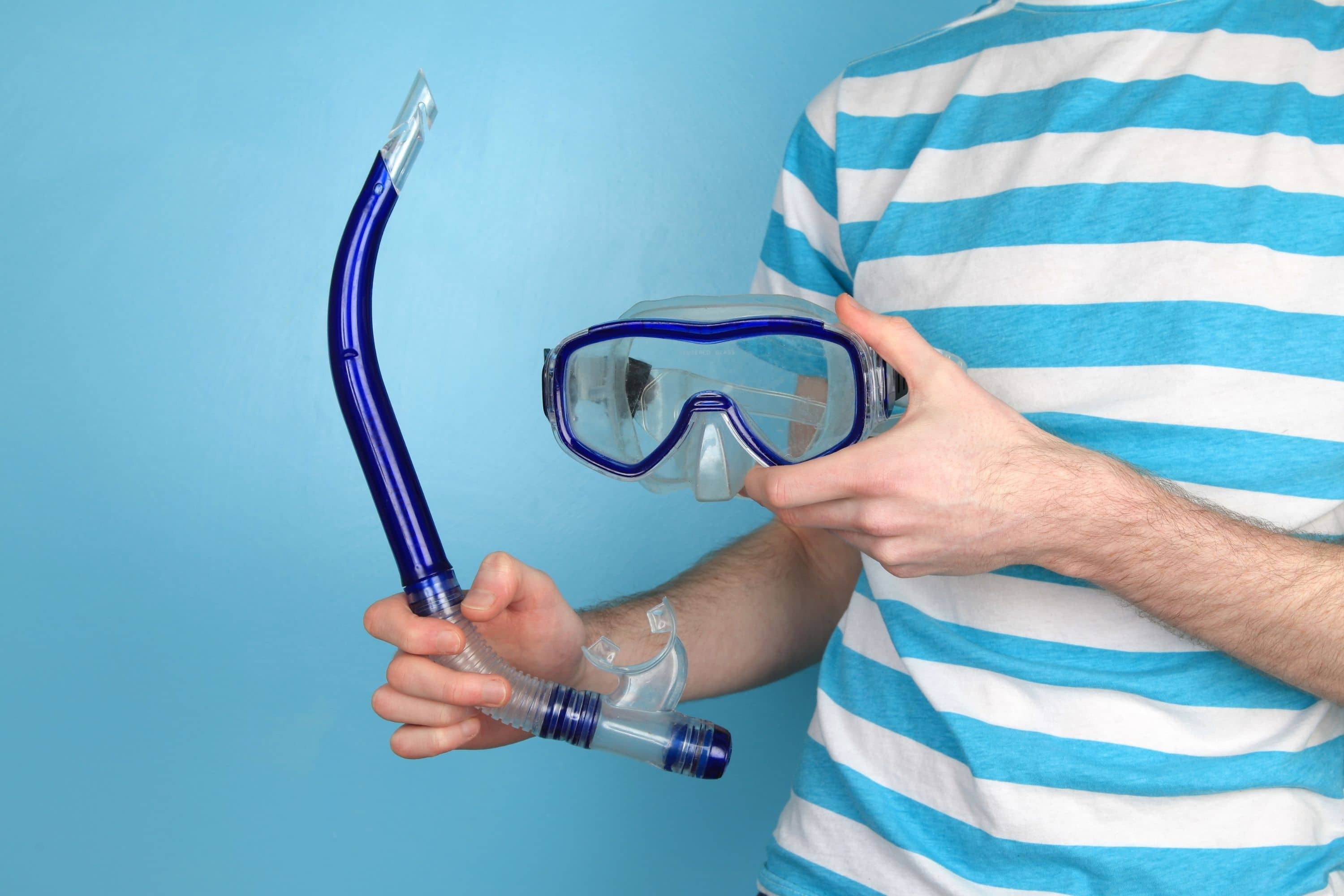
How to Clean the Skirting Of Your Mask?
The skirt of your mask is what makes it hold to your face tightly ensuring your safety and allowing you to enjoy your underwater adventures. However, since we often have different sunscreen creams and oil applied onto our faces in summer, those products tend to leave quite a sticky residue on our snorkeling masks.
With time, that residue will result in a dirty mask skirt that is not able to hold to your skin properly. In addition, since most mask skirts are made of silicone, this material will sooner or later grime up and get brittle. As a result, it will develop warps and bends resulting in the loss of seal.
This is why it is so essential to always keep your mask skirt ideally clean and sand and grime-free! To do this, simply make use of a soft-bristled brush and any non-gel toothpaste that has no scrubbing or abrasive particles in it.
However, if the mask skirt already has mildew, you’d better opt for a mixture of water and bleach instead.
With these simple tricks, you will always have your snorkel mask free from mildew and yellowness on its skirt.
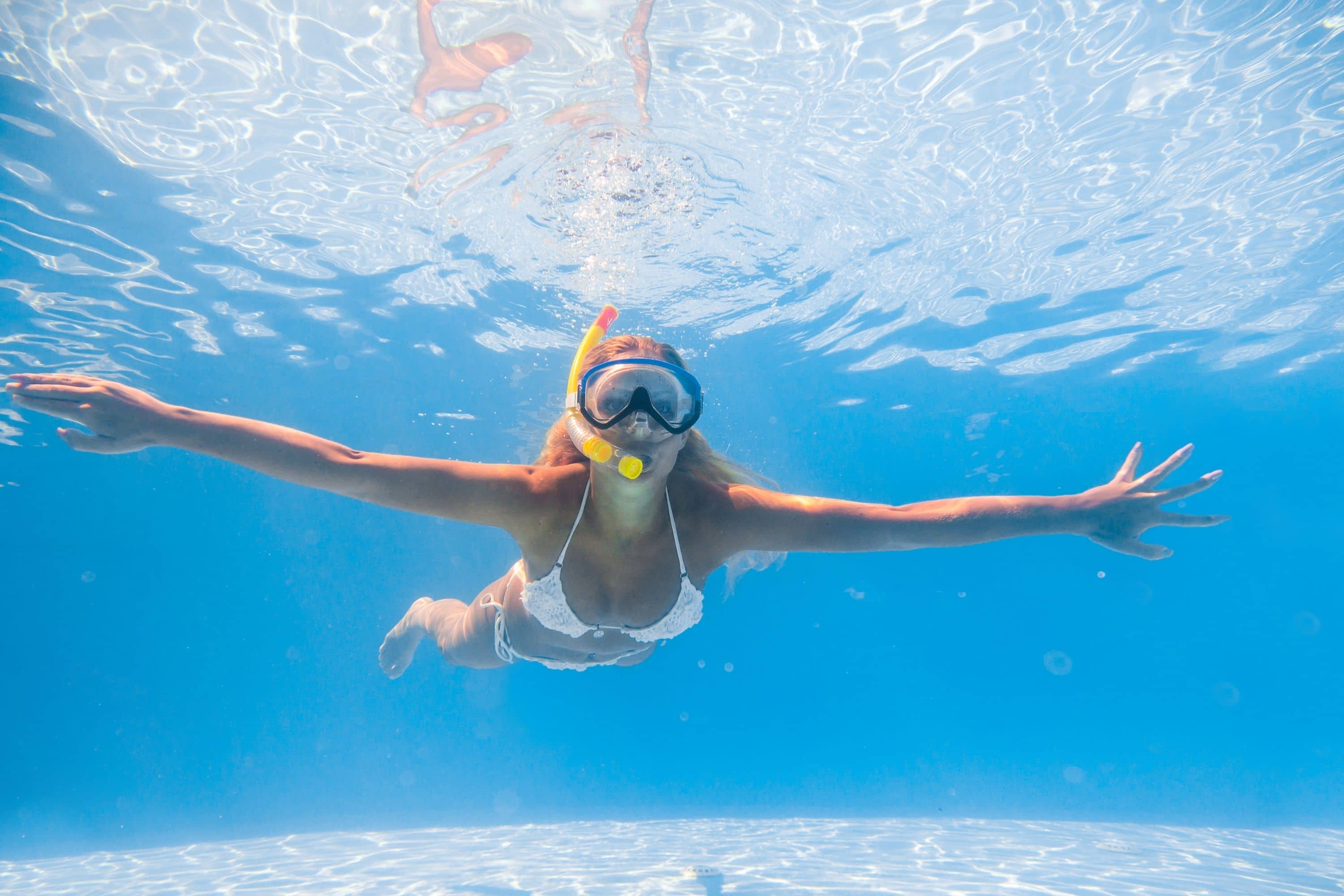
Why Is It Important to Keep Your Snorkeling Mask Clean?
Well, the obvious answer would be to make it last longer and serve you better. And this is indeed true. However, there are a few more reasons why you should take care of your snorkel mask properly.
- Clean mask provides you with proper visibility underwater, and this is what this thing is initially made and used for.
- Clean snorkel mask will make it impossible for fogging to develop. Since fogging is nothing more than water droplets attached to dirt, dust, and debris, keeping your mask properly cleansed is mandatory.
- A properly maintained and cleaned mask will last way longer.
- Cleaning your mask regularly will ensure it is safe to wear in terms of hygiene.
In general, you will be able to save money, health, and make sure your vacation and underwater experience is great when simply having a clean snorkel mask!
So now that you are completely informed about the snorkel mask cleaning methods and nuances, and also you know why it is important to keep this simple gear in a proper state, we are sure your vacation will not be ruined with a foggy or dirty mask.
[wp-faq-schema title=”Frequently Asked Questions”]
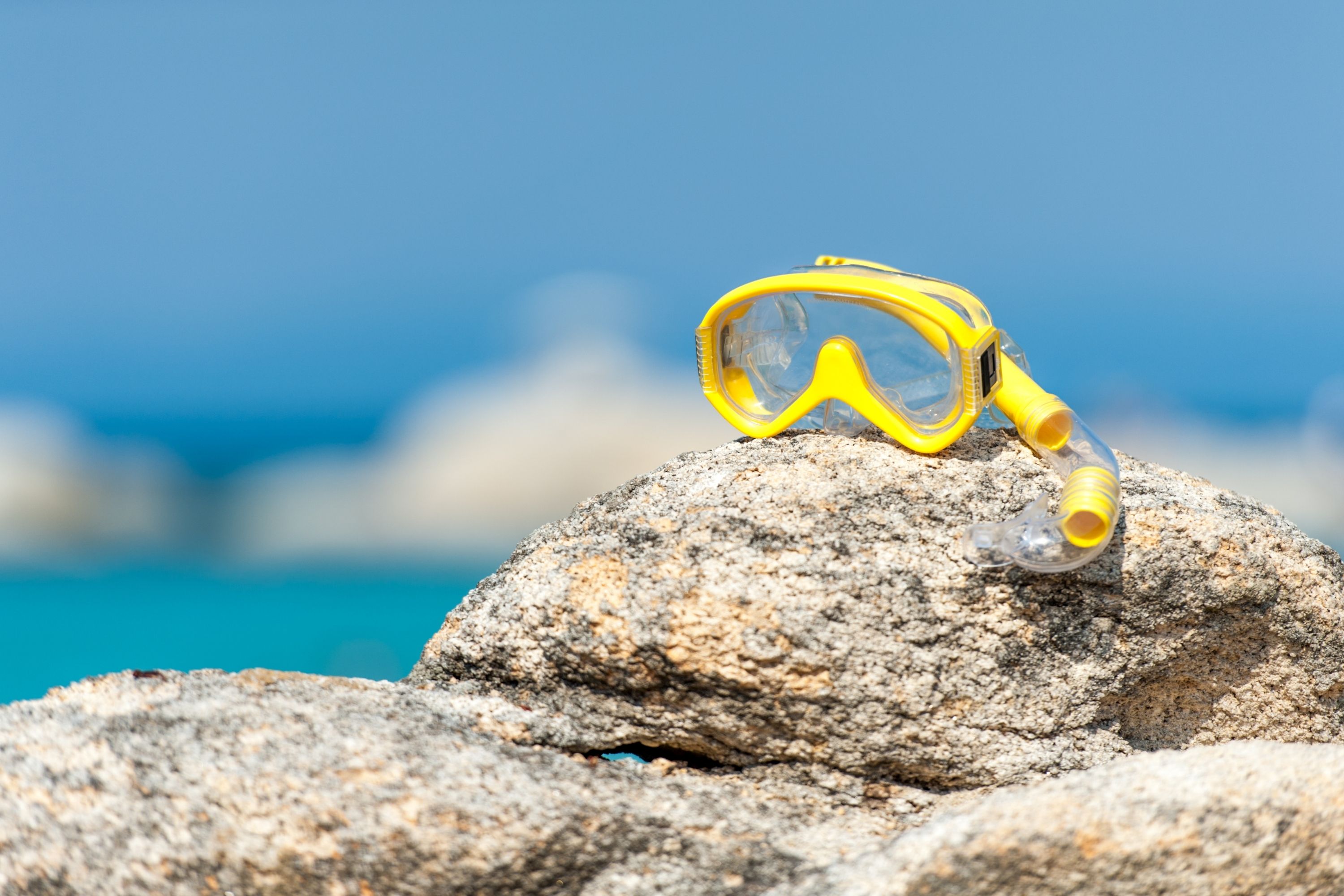
How do I clean my snorkel fins properly? I have never done this before, that’s why I’m afraid I can do something wrong and ruin the gear, and it was pretty expensive.
Well, fins are quite easy to clean by the way! Simply hose them down with clean tap water and hang them in the sun to dry. Once they are dry, I recommend you store them away from sunlight, better somewhere where it’s cool and dry. I personally use a mesh bag and keep mine in a garage.
Is there another way of cleaning a snorkel except for using a dishwashing liquid and water? I know that using harsh chemicals is not allowed so maybe some of you know some delicate cleaning products? Thanks in advance!
Hey! Well, I tried bleach and water once and it worked well. You need to dissolve 1 spoonful bleach in a bucket of water, mix it all, and place your snorkel into the solution for half an hour. After that, rinse it very thoroughly and dry.
But as an alternative way, I could also recommend vinegar! Use it the same way you use dish detergent. This is actually my go-to method of all times!